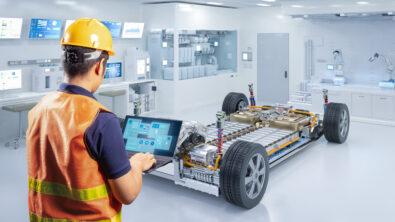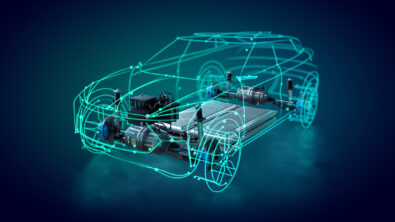How to manage E/E systems development for autonomous vehicles

Due to technological advances and changing consumer trends, the complexity of vehicle development has increased dramatically over the last few years. Electrical and electronic (E/E) systems lie now at the core of vehicle architecture and have become significantly more sophisticated.
The underlying electrical and electronic (E/E) architecture becomes even more crucial for car manufacturers with autonomous vehicles on the rise. Hardware’s traditional role is being replaced by embedded software and electric and electronic systems which enable key vehicle features.
It is expected that 15% of all new vehicles sold in 2030 could be fully autonomous, so the pressure is on automakers and their suppliers to overcome the complexity of these E/E sophisticated architectures and deliver a differentiating mobility experience. As the levels of driving automation continue to progress towards full automation, every level will be more challenging and complex than the previous one, and vehicles will increasingly rely on the E/E architecture. This will also involve a gradual effort in creating consumer trust: future cars need to be smart, safe, and reliable for their passengers and the surroundings.
The market opportunities for original equipment manufacturers (OEMs) developing autonomous driving systems are enormous; however, they must find a way to remove the roadblocks to marketable innovation. In such a challenging market environment with fast and agile technology players competing in the race to develop driverless vehicles, a business model transformation will be the key to enjoying the most success. Traditional car manufacturers are already investing in increasing their own software competency and expanding their services to cover the full range of component development, from design through manufacturing. OEMs must move away from traditional siloed approaches and embrace new methodologies that integrate all technical domains involved in E/E architecture design to ensure powerful design automation, cross-domain integrations, and comprehensive data coherency.
To offer you some clarity in this complex transition, we have created an infographic with an overview of the current trends in the automotive industry and the possibilities for automakers to overcome the challenges. In the infographic, you will also learn about Siemens E/E Systems Development for Autonomous Vehicles solutions and how they could help your business take a leading position in the race to deliver safe and reliable autonomous vehicles.
E/E Systems Development enables OEMs to master the cross-domain complexity of AV architecture by providing an end-to-end integrated approach to E/E architecture development and lifecycle management, including architectural definition, wiring design, and software engineering. The Siemens next-generation software for E/E systems engineering delivers model-based development throughout the vehicle’s E/E system design, manufacturing, and service. It also provides each domain with a system-level context that enables engineers to explore designs, solve issues and achieve higher quality while reducing engineering times.
With the E/E Systems Development solutions, you will be able to virtually verify and validate embedded software, vehicle networks, and wiring harnesses in an integrated, collaborative engineering environment to deliver the autonomous driving innovation the world is waiting for.
Turn complexity into a competitive advantage; check out the free infographic for more information!


